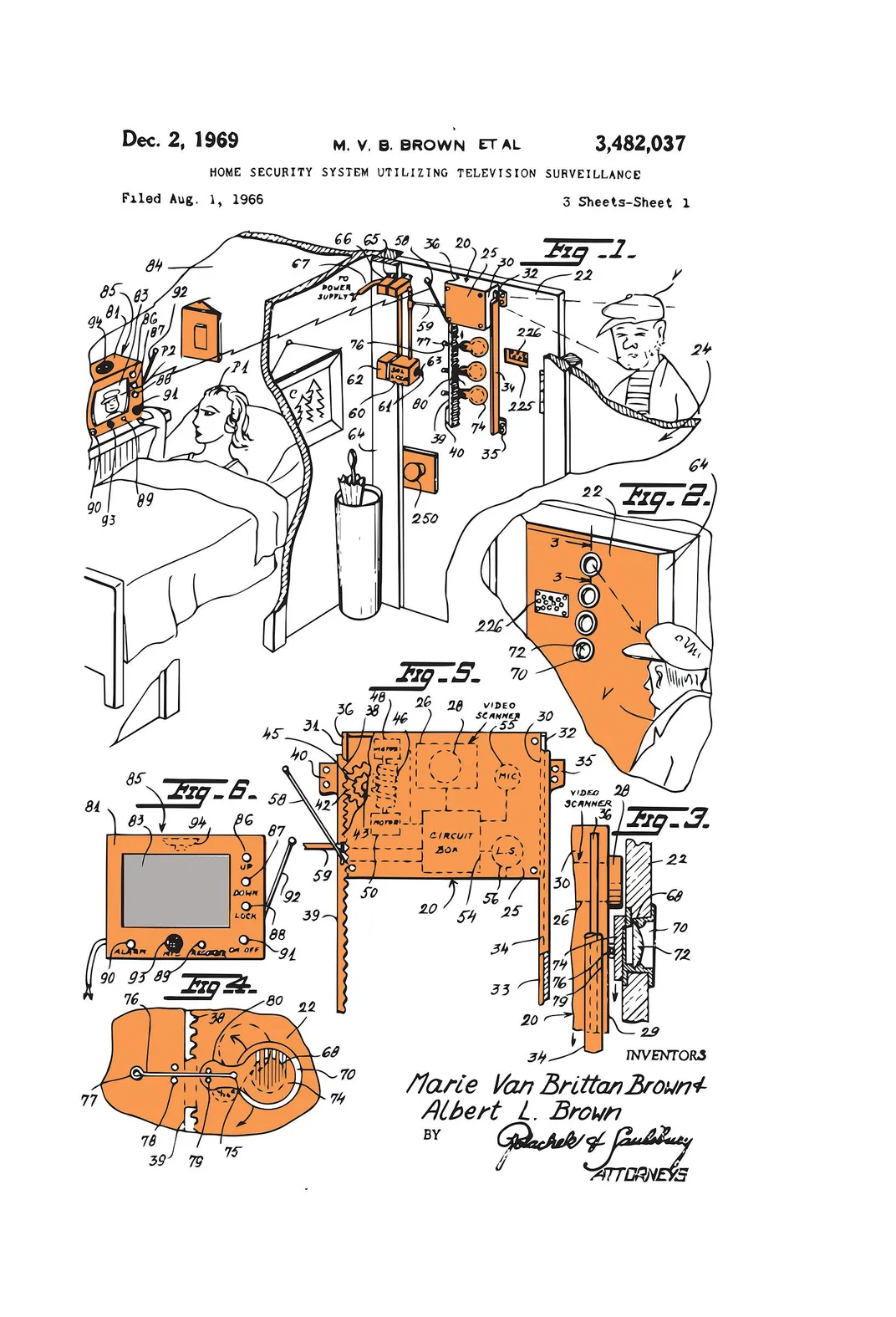A Brief History of the Invention of the Home Security Alarm
A hardworking nurse envisioned a new way to know who was at the door
:focal(361x342:362x343)/https://tf-cmsv2-smithsonianmag-media.s3.amazonaws.com/filer/33/7f/337f77a8-c24a-4a79-8b34-6c60d81ce6e1/collage-opener.jpg)
Marie Van Brittan Brown, an African American nurse living in Jamaica, Queens in the 1960s, was working odd shifts, as was her husband, Albert, an electronics technician. When she arrived home late, she sometimes felt afraid. Serious crimes in Queens jumped nearly 32 percent from 1960 to 1965, and police were slow to respond to emergency calls. Marie wanted to feel safer at home.
Enlisting her husband’s electrical expertise, Marie conceived a contraption that could be affixed to the front door. It would offer four peepholes, and through these, a motorized video camera on the inside could view visitors of different heights as the occupant toggled the camera up and down. The camera was connected to a television monitor inside. A microphone on the outside of the door and a speaker inside allowed an occupant to interrogate a visitor, while an alarm could alert police via radio. Closed-circuit television, invented during World War II for military use, was not widespread in the 1960s, and the Browns proposed using the technology to create the first modern home security system.
They filed a patent for their device in 1966, citing Marie as lead inventor. It was approved three years later. “The equipment is not in production,” the New York Times reported, “but the Browns hope to interest manufacturers and home builders.

That never happened, presumably because the Browns’ system was ahead of its time. “The cost of installing it would be pretty high,” says Robert McCrie, an emergency management expert at John Jay College of Criminal Justice in Manhattan.
Marie’s invention, though it didn’t benefit them financially, would earn the Browns a measure of recognition in the tech world: The predecessor of today’s home security systems, it has been cited in 35 U.S. patents. Companies first offered CCTV to residential consumers around 2005, but Marie never saw her vision realized; she died in Queens in 1999, at the age of 76.
As the tech has become cheaper and smarter, home security has grown into a $4.8 billion business in North America and is expected to triple by 2024.